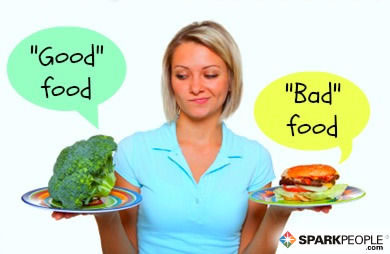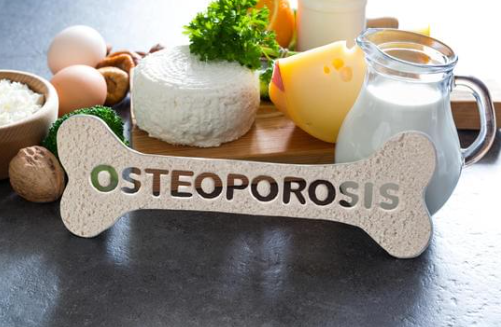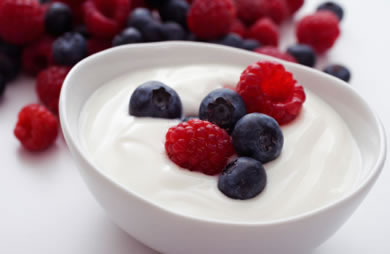For those who eat meat, it provides protein and other nutrients, including iron, thiamine and zinc. But many sources of meat can also be high in fat, especially saturated fat, which has been linked to high cholesterol and heart disease. And any food that is high in fat is also higher in calories, which can make it tough to reach your weight management goals.
To assist consumers in meat selection, the government developed the following definitions, based on a cooked, three-ounce portion of meat.
- Extra lean meat contains less than five grams of total fat and less than two grams of saturated fat.
- Lean meat contains less than 10 grams of total fat and less than 4.5 grams of saturated fat.
This guide will help you navigate the meat department and make the best choices for health, calories and flavor.
Beef
Once considered a health no-no, red meat is making its way back to the plates of dieters and health-conscious eaters alike. But not every cut of red meat is a winner. Here are some considerations to make when selecting beef.
Grade: Grade refers to the amount of marbling, or fat, found in the cut of meat. It has nothing to do with the safety of the meat or how it was raised—it's all about the fat content. Meat that has a higher grade has more fat, and therefore greater tenderness. The three most common grades are:
- Prime (the fattiest cut, most often found in restaurants)
- Choice (moderate in fat)
- Select (the leanest grade)
Cut: Cut refers to the part of the animal the meat has been taken from. Most of the leaner cuts come from the animal’s hip or hindquarter region. "Round" or "loin" are keywords to look for when you want the leanest cut of meat (think top round, sirloin, top loin, tenderloin, eye round, etc.). When selecting ground beef, look at the percentages: 80/20 percent lean means the meat is 80 percent lean and 20 percent fat. Look for ground beef labeled 90/10 percent (or leaner). To assist with the nutritional analysis of your ground beef selection, check out this calculator developed by the USDA. See the chart below for a nutritional comparison of various cuts of beef.
Color: Color is another way to tell how much fat red meat contains. Visible marbling (fat streaks) indicates higher-fat meats; less marbling means it's lower in fat. For ground meat, the darker the meat, the lower its fat content and vice versa.
| A Note on Grass-Fed Beef |
|---|
| Most cattle in the U.S. are fed a grain-based diet comprised of corn, soy and other byproducts, despite the fact that cattle are natural grazers of grass and other greens. Some research indicates that grass-fed beef may be lower in overall fat and higher in heart-healthy omega-3 fatty acids than its conventional counterparts. Grass-fed beef should be labeled as such, and if it doesn't have that label, you can assume it was grain-fed. Many traditional supermarkets now offer some grass-fed beef, but the best place to purchase it is at your local farmers market or health food store. If your local grocer does not carry grass-fed beef, ask the butcher if they can get it for you. |
See the chart below for a nutritional comparison of various types of beef. These values are for a single cooked, three-ounce serving (85 grams) of meat with fat trimmed, unless otherwise specified.
| Beef Cut | Calories | Total Fat (g) | Sat Fat (g) | Cholesterol (mg) |
| Eye round roast | 138 | 3.5 | 1.2 | 63 |
| Ground beef (95/5 percent) | 145 | 5.6 | 2.5 | 65 |
| Top sirloin steak | 156 | 4.9 | 1.9 | 70 |
| Bottom round roast | 157 | 6.5 | 2.7 | 66 |
| Flank steak | 158 | 6.3 | 2.6 | 66 |
| T-Bone steak | 161 | 7.4 | 2.6 | 47 |
| Tenderloin steak | 164 | 6.7 | 2.5 | 69 |
| Chuck shoulder pot roast | 167 | 6.6 | 2.4 | 83 |
| Round steak, top | 169 | 4.3 | 1.5 | 76 |
| Top round roast | 169 | 4.3 | 1.4 | 76 |
| Brisket flat half | 174 | 5.9 | 2.3 | 85 |
| Round steak, bottom | 182 | 6.5 | 2.3 | 79 |
| Porterhouse steak | 184 | 9.5 | 3.3 | 53 |
| Ground beef (90/10 percent) | 184 | 10 | 3.9 | 72 |
| Beef brisket | 185 | 8.6 | 3.1 | 79 |
| Beef ribs | 202 | 11 | 4.5 | 69 |
| Ground beef (80/20 percent) | 230 | 15 | 5.7 | 77 |
| Beef vs. Bison |
|---|
| Bison (or the American buffalo) has a similar taste and texture as beef, but is leaner in fat and lower in calories. For example, a cooked serving of ground bison contains 152 calories, 7 grams of fat and 3 grams of saturated fat, compared to ground beef, which provides 210 calories, 13 grams of fat and 5 grams of saturated fat on average. While there is a lot of variety in the diets of most American cattle, bison are generally grass-fed and are not given antibiotics or hormones. However, inspection is mandatory for beef, but not for bison. Bison is also not graded by the USDA, which is voluntary for beef. |
Poultry: Chicken and Turkey
Chicken and turkey are generally thought of as a healthier alternative to red meat. While poultry can be leaner, certain cuts and cooking methods can make it just as bad for you—if not worse—than red meat. When selecting poultry, consider the following:
Cut: Different cuts of poultry, like beef and pork, have different calories and fat content. Generally, white meat, such as breasts and wings, are lower in calories, fat and cholesterol, while cuts of dark meat (legs and thighs) are higher. Boneless, skinless chicken or turkey breast are the leanest cuts of poultry. Skinless chicken wings are also a good choice, but beware of fried chicken wings, which are often dipped in high-calorie sauces.
Color: Light and dark selections of turkey or chicken have their own pros and cons. White meat, or any meat lighter in color, is leaner than darker cuts. However, dark meat contains more B vitamins (such as thiamine) and iron, even though it's higher in fat and calories. Choose leg or thigh pieces every once in a while for a nutritional boost—especially if you prefer eating less iron-rich red meat. When purchasing ground chicken or turkey, look for ground chicken or turkey breast; it will be lighter in color and lighter on the waistline. Ground chicken and ground turkey can include fat and skin in addition to the meat, thus increasing the fat and calorie content.
Skin: On its own, poultry skin isn't necessarily bad for you, but when the meat is cooked, a lot of the fat seeps out and gets trapped in the skin, making it high in fat. Choose skinless whenever possible (or simply remove the skin yourself) and you'll save 50 calories and 5 grams of fat per 3 oz. (cooked) portion.
Sodium: Poultry is generally low in sodium, but when you purchase it marinated, frozen or canned, it can contain added sodium. Read labels carefully: Look for "low sodium" or "no salt added" varieties of canned or frozen poultry. Some canned chicken items, while convenient, can contain more than 250 mg of sodium per serving. The "low sodium" products usually contain less than a third of the sodium in the original products.
| Debunking the Turkey Bacon Myth |
|---|
| Turkey bacon is often recommended over regular (pork) bacon because turkey is generally lower in fat than pork. However, when it comes to bacon from either source, this is not always true. In fact, turkey bacon often contains more sodium than its pork counterpart. Read labels and choose leaner cuts of bacon for the best balance between sodium, fat and overall calories. For example, three slices of center-cut pork bacon contain 70 calories and 4.5 grams of fat, but just two slices of turkey bacon contain just as many calories and significantly more sodium. |
See the chart below for a nutritional comparison of various types of poultry. These values are for a single cooked, 3-ounce serving (85 grams), unless otherwise specified.
| Poultry Cut | Calories | Total Fat (g) | Sat Fat (g) | Cholesterol (mg) | Sodium(mg) |
| Turkey bacon (1 ounce, | 107 | 7.8 | 2.3 | 27 | 640 |
| Turkey breast, skinless | 115 | 0.6 | 0.2 | 71 | 44 |
| Ground turkey, fat-free | 117 | 2.1 | 0.6 | 55 | 50 |
| Chicken breast, skinless, roasted | 140 | 3.0 | 0.8 | 72 | 63 |
| Chicken drumstick, skinless, roasted | 158 | 8.5 | 2.3 | 110 | 97 |
| Chicken breast with skin, roasted | 167 | 6.6 | 1.8 | 71 | 60 |
| Ground turkey, 85/15 percent | 212 | 14 | 3.5 | 89 | 69 |
| Chicken drumstick, with skin, batter fried | 228 | 13.3 | 3.5 | 73 | 229 |
Pork
Though it has been marketed as "the other white meat" in recent decades, pork is actually considered a type of red meat. While pork is synonymous with bacon and sausage, which can be high in fat, not all pork cuts are a dieter's nightmare. As with beef and chicken, the cut of the pork meat plays an important role in making a healthy selection. The leanest cut of pork is the pork tenderloin; however, other cuts such as pork chop, roasts, or leg (ham) are also good choices. Choose center cut or Canadian bacon over regular bacon strips. Lean pork is a good source of thiamine, phosphorous, niacin and vitamin B-12, and is high in protein and low in fat. In fact, lean pork actually contains higher amounts of thiamin, niacin and vitamins B-6 and B-12 than many other types of meat. Choose high fat/processed cuts, such as sausage and hot dogs, as a rare treat. (See the "processed meats" section later in this article for more information.)
| What About Bacon? |
|---|
| Bacon can add a lot of flavor to a dish, whether crumbled in pasta, served over a bed of greens or used as a topping on a sandwich. A few slices (3) of center cut bacon contain just 70 calories and 4.5 grams of fat, which isn’t as caloric as most people might imagine. The bigger issue with bacon, and all processed meats, is portion control. When choosing bacon at the local grocer, look for nitrite-free, uncured, center-cut bacon, and be sure to stick to the recommended serving size (usually 2-3 slices). Use bacon more as a garnish for flavoring foods rather than as a main component of your meal. |
See the chart below for a nutritional comparison of various types of pork. These values are for a single cooked, three-ounce serving (85 grams), unless otherwise specified.
| Pork | Calories | Total Fat (g) | Sat Fat (g) | Cholesterol (mg) | Sodium (mg) |
| Canadian bacon (1 ounce, | 52 | 2.4 | .8 | 16 | 433 |
| Tenderloin | 122 | 3.0 | 1.0 | 62 | 48 |
| Cured ham, extra lean, 95/5 percent | 123 | 4.7 | 1.5 | 45 | 1023 |
| Top loin chop | 147 | 5.0 | 1.8 | 61 | 38 |
| Top loin roast | 147 | 5.0 | 1.6 | 67 | 40 |
| Sirloin, chop or roast | 151 | 4.5 | 1.5 | 71 | 56 |
| Cured ham, regular | 151 | 7.7 | 2.6 | 50 | 1275 |
| Bacon (1 ounce, | 151 | 11.7 | 3.8 | 31 | 647 |
| Low sodium bacon | 151 | 11.7 | 3.8 | 31 | 288 |
| Fresh ground pork | 157 | 5.3 | 1.8 | 72 | 75 |
| Fresh leg | 179 | 8.0 | 2.8 | 80 | 54 |
| Shoulder | 196 | 11.5 | 4.1 | 76 | 64 |
Deli Meat and Processed Meat
Processed meats include sausage, cold cuts (deli meat), bologna, salami, pepperoni and even canned spam. These meats are convenient, often inexpensive and make for easy party snacks or quick meals. Of course, like all types of meat, some choices in the processed category are better than others.
Whole Cuts of Deli Meat
When shopping for deli meat, select whole cuts as often as possible. These are meat slices cut from whole sections of the animal (cooked but otherwise unprocessed), such as sliced turkey breast. Whole-cut deli meats are usually more expensive and can be found at the deli counter. The best choices for deli meat are low sodium meats that are sliced from the whole animal, such as low-sodium chicken or turkey breast. You can sometimes find them packaged in the refrigerated deli meat section, but that can be tricky since most packaged deli meats (cold cuts) are processed (more on that below).
Sectioned and Formed Meat
This type of deli meat has been put together from multiple cuts of meat. These chunks of meat are "glued" together using non-meat additives and emulsions (think SPAM). Sectioned and formed meat is often cheaper than whole cuts, but also tends to contain higher amounts of sodium and preservatives.
Processed Meats
There are more than 200 varieties of cold cuts and processed meats, including bologna, Vienna sausages and hot dogs. Processed meats are made of meat and meat byproducts (such as lips, stomach and heart) that have been chopped, seasoned and formed into the desired shape. Front-of-package labels can be deceptive, as "chicken" deli slices often include more than just the meat you would carve from the cooked chicken to eat.
Processed meats also tend to be high in sodium and contain nitrites/nitrates, a type of preservative that helps the product retain its color while preventing the growth of Clostridium botulinum (which is responsible for botulism). When the meat is cooked, the nitrites combine together with naturally occurring amines to form carcinogenic compounds called nitrosamines. However, in the 1920s, US meat curing practices were altered and this resulted in a 69% decrease in the average amount of nitrite content of processed meats. The prevalence of gastric cancer declined drastically. In 1970, it was discovered that ascorbic acid (Vitamin C) inhibited the formation of nitrosamine. This discovery led to the required addition of ascorbic acid to meat processed in the US.
Sausage is defined as ground meat, usually pork or pork blends, mixed with fat, salt, preservatives, and spices. Most often we think of sausage in the "link" form, which is wrapped in a casing, but it can also come in bulk or patty form as well. Fresh sausage is raw and needs to be cooked thoroughly before eating. Dry or cured sausages have already been cooked through and are ready to eat. Usually, fresh sausages are lower in sodium and fat than cured sausages are. To reduce the fat even more, cook sausage on a griddle pan or grill where the fat can be drained off and discarded; then, use a couple of paper towels to pat the sausage dry before eating. As with bacon, try to use sausage more as a condiment to enhance the flavor of soups, pasta, or rice dishes instead of as the main source of protein during a meal.
Hot dogs, which are actually a type of sausage, are traditionally comprised of a mixture of pork and beef trimmings and fat, along with some flavorings, seasonings and preservatives. Other varieties include chicken or turkey dogs, or a mixture of all of the above using low cost mechanically separated poultry products. Generally, hot dogs are high in sodium and fat and contain high amounts of nitrites, which have all been linked to health issues. However, hot dogs can be enjoyed as a rare treat. Just remember to buy uncured or nitrite-free varieties, and look for dogs with less than 350 mg of sodium per serving.
Processed meats are often higher in sodium and fat and research has linked high consumption of processed meats with certain types of cancer. However, small amounts of processed meats on occasion are probably safe to eat.
See the chart below for a nutritional comparison of various types of deli and processed meats. These values are for a single three-ounce serving (85 grams) of meat, unless otherwise specified.
| Deli or Processed Meat | Calories | Total Fat (g) | Sat Fat (g) | Cholesterol (mg) | Sodium (mg) |
| Turkey breast lunch meat | 84 | 1.8 | .42 | 42 | 789 |
| Low-sodium turkey breast lunch meat | 99 | .75 | .28 | 37 | 656 |
| Turkey frankfurter (1 link) | 100 | 7.8 | 1.8 | 35 | 485 |
| Beef and pork frankfurter (1 link) | 137 | 12.4 | 4.8 | 22 | 504 |
| Canned vienna sausage (5 sausages, 5 grams) | 186 | 15.7 | 5.7 | 70 | 782 |
| SPAM | 264 | 23 | 8.4 | 60 | 1164 |
| Pork and beef lunch meat | 300 | 27 | 9.8 | 47 | 1099 |
Preparation Tips for All Cuts of Meat
Once you've selected your meat of choice, how do you prepare it to ensure you're keeping it lean and healthy? Apply the following tips to any cut of meat.
-
Trim the Fat: Trim off any visible fat prior to cooking. If preparing a stew or soup, make it the day ahead and refrigerate it overnight. The fat will rise to the top and harden, making it easy to skim off and discard. For ground meat, brown the meat and place it in a colander. Drain and rinse with water for one minute. Cubed meat should be browned and drained of fat before using.
-
Portion Control: Aim for 3-4 ounces per serving, or about the size of a deck of cards. As with any meal plan, portion control is key to reducing fat and calorie intake.
-
Cooking methods: Choosing the appropriate cooking method is important in preventing leaner cuts of meat from becoming dried out and tough. Lean cuts of meat often benefit from a moist cooking method, such as braising. If you prefer to grill or broil your meat, try marinating it first for at least six hours. A short marinade (less than an hour) will add flavor, but longer marinades will also help tenderize the meat. Be sure to include an acidic component, such as vinegar, wine or citrus juice, along with the other ingredients. Other low-fat cooking methods include roasting, sautéing and baking.
| TIP: Keeping Low-fat Burgers Juicy |
|---|
| Worried your burgers will turn into hockey pucks if you cut the fat? Don't be! Try adding ~2 spoonfuls of unsweetened applesauce to one pound of ground beef to help it retain its moisture. |
-
Choose the least processed cuts: Look for "whole" meats, such as chicken breast, steak cuts, pork chops, ground turkey, etc., and avoid packaged meats, such as hot dogs, bologna and sausage. Processed meats tend to be higher in sodium and unhealthy fats. They have also been linked to increased risks for heart disease, cancer and obesity.
-
Fat: Avoid adding high-fat toppings, such as cheese and butter, to your meat. Opt to flavor meat with fresh herbs and spices instead. Some rubs can be high in salt, but you can control this by making your own rubs.
-
Ingredients List: Scan the ingredients list for fillers or additives that are added for flavor, bulking or preservation. Fillers may include starches, isolated soy protein, cellulose fibers, soy concentrate, TVP (textured vegetable protein) and carrageenan.
This article has been reviewed and approved by Becky Hand, licensed and registered dietitian, as well as healthy eating expert Tanya Jolliffe.
Sources
American Pregnancy Association. "Listeria and Pregnancy", accessed July 2011. www.americanpregnancy.org.
National Agricultural Library. "USDA National Nutrient Database", accessed July 2011. ndb.nal.usda.gov.
Oxford International Journal of Epidemiology. "The epidemiological enigma of gastric cancer rates in the US", accessed July 2011. ije.oxfordjournals.org.











